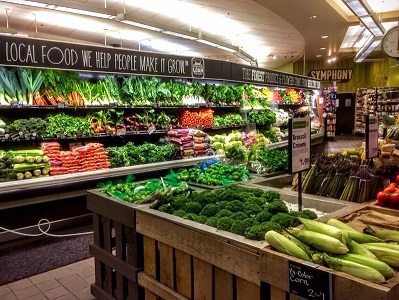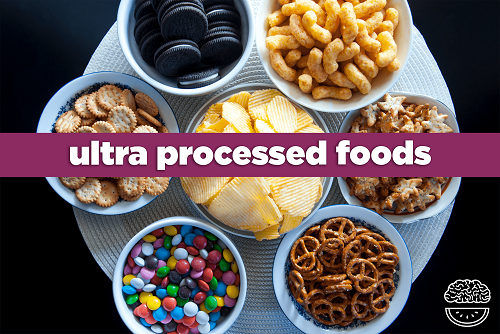Processed foods and your health
Who doesn’t eat processed foods? Almost all the foods we eat undergo some processing. Bread is processed, crackers are processed. Real cow’s milk is pasteurized to kill some bacteria and is fortified with vitamin D. But highly processed foods have many nutrients and fiber removed. Now many health professionals are talking about ultra-processed foods.
Is some processing of foods needed?
Yes. As noted, cow’s milk is pasteurized to kill harmful bacteria. They also add vitamin D to milk which is a good thing. Some foods are frozen, like frozen vegetables and frozen fruit to prolong shelf life. Grains are processed to make bread, crackers, cereal.
What type of food processing is not good for our health?
You may have heard of refined grains. All grains start out healthy as whole grains. Then many grains are refined, which removes one or more parts of the grain. White flour and white rice are both refined because they have the healthiest parts of the grain removed, the bran and the germ. This refining process also removes more than half of the nutrients in the grain and most of the fiber. Since so many nutrients are removed, the government recommended adding some B vitamins and the mineral, iron, back. You will see “enriched” on the package as these refined grains have some, but only some of the vitamins and only on mineral added back.
Have you heard people say, “bread makes me fat”? Interesting as when they make white bread and white rice, the refining process creates a more easily digested starch. And some studies have shown that this can increase your risk for gaining weight and increase your risk of type 2 diabetes. However, eating whole grains like whole grain bread and brown rice, not only doesn’t increase weight gain, it helps lower your risk of gaining weight. Other studies have found that eating whole grains like oatmeal, quinoa, and whole grain breads can even help “fight your belly fat bulge” and lower your risk for heart disease. (See, Why Ultra-Processed Foods are Bad for Your Waist Line.)
Processing of foods can be bad for our health when the processing, like refining grains, removes vitamins, minerals, fiber and even removes antioxidants. Not only that, but many processed foods often have added sugars, salt and saturated fat.
What are ultra-processed foods?
Many of us have too much processed foods in our diet, now we can add ultra-processed foods to the mix. NIH notes that it isn’t just how foods are processed but what else is added to the foods. Ultra-processed foods often have added sugar, added salt, added fat, things like hydrolyzed protein, starches, artificial coloring, flavoring, emulsifiers, and other chemicals. The BMJ notes “ultra-processed foods include packaged baked goods and snacks, fizzy drinks, sugary cereals, ready meals containing food additives, dehydrated vegetable soups, and reconstituted meat and fish products – often containing high levels of added sugar, fat, and/or salt, but lacking in vitamins and fibre [sic].”
Confused about reconstituted meat? Think about those lunch packs for kids with the “meat” slices and not real cheese but a cheese product. Harvard Health has an interesting chart by a dietitian, Katherine D. McManus, that provides examples of minimally processed, processed, and ultra-processed foods.
|
Minimally Processed |
Processed |
Ultra-Processed |
|
Corn |
Canned Corn |
Corn Chips |
|
Apple |
Apple Juice |
Apple Pie |
|
Potato |
Baked Potato |
French fries |
|
Carrot |
Carrot juice |
Carrot Cake |
|
Wheat |
Flour |
Cookies |
(Chart from Harvard Health Blog, 2020)
Most of us, including my family, eat ultra-processed foods. Who doesn’t enjoy some pie, chips, cake or cookies? But some people have entire meals of ultra-processed foods – fries, reconstituted meat, cheese products, not real cheese and then enjoy their ultra-processed dessert. Some students in my classes have no fruits or vegetables in their diet except for French fries. Consumer Reports states, “About 60 percent of Americans’ total daily calories come from ultra-processed food…”. Focusing one’s diet on more fresh fruit, vegetables, nuts and whole grains like oatmeal, whole grain bread, quinoa can help one cut back on ultra-processed foods. And make more foods at home. When you bake at home, you can make cookies, cakes and other desserts without the artificial preservatives or the artificial colorings found in store bought bakery items.
WebMD has some ideas for adding whole grains to your meals and snacks:
- Snack on whole grain cereal like any General Mills cereal. A great way to add whole grains to a kid’s day.
- Use some whole grain flour or oatmeal when making cookies. Try the oatmeal chocolate chip cookie recipe on the oatmeal box. Another way to sneak some whole grains into your kid’s day.
- Chips – choose some whole grain chips like Sun Chips.
- Popcorn – whole grain and a great snack
Below are some suggestions for avoiding ultra-processed foods and eating more whole foods (list adapted from Consumer Reports):
- Focus on unprocessed foods like fresh fruit, fresh vegetables, real cow’s milk, eggs, meat, poultry, seafood, yogurt, real 100% juice, water.
- Read the ingredients and look for coloring (e.g. yellow No. 5), artificial flavors, or ingredients you don’t know like potassium benzoate added as preservatives. (The next time you are in a grocery store, compare the ingredients in Sunny D to the ingredients in 100% orange juice.)
- Make it yourself – make your own cookies, your
own salad dressing, your own protein shake, smoothie.
- Shopping at the grocery store – the healthiest foods are around the perimeter of the store (except the bakery). Think produce, meats, and dairy. But frozen fruits, vegetables, meats are also a healthy choice.
- Skip the artificial creams and sweeteners for
your coffee or tea. Most are loaded with
added sugar in the form of high fructose corn syrup. Use real milk, even whole milk, instead of the
fake creams.
- Snacks – plan your snacks. Running errands? Take some healthy snacks with you. Plan healthy snacks for your break at work. You will be less tempted by the vending machine if you brought your own snack from home.
- Pack your lunch – even if working from home, learning from home, take the time to pack or at least plan your lunch. Be sure to include all 5 food groups in your lunch.
How can you eat more whole grains, fruits, vegetables and nuts this week?
Choose whole foods and shop the
perimeter.
Sources: pasteurized , starch , whole grains , studies , Why Ultra-Processed Foods are Bad for Your Waist Line , ultra-processed , NIH , notes , Health , Blog , Consumer Reports, WebMD Image Sources: foods , Processed , Whole foods





Comments
Post a Comment